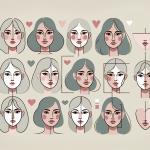Types Of Purple
Purple is a color that has been used throughout history for various purposes. From ancient times to the present day, purple has been associated with royalty, spirituality, and creativity. There are many different shades of purple, each with their own unique properties and meanings.
Historically, purple has been a symbol of power and wealth. In ancient times, the dye used to create purple fabric was extremely expensive and only the wealthiest members of society could afford to wear it. Purple was also associated with spirituality, as it was believed to have a calming effect on the mind and body. In modern times, purple is often used in design and art to represent creativity and innovation.
There are many different shades of purple, ranging from light lavender to deep violet. Each shade has its own unique properties and meanings. For example, light shades of purple are often associated with femininity, while darker shades are associated with power and sophistication. Understanding the different shades of purple and their meanings can help designers and artists choose the perfect color for their projects.
Key Takeaways
- Purple has been used throughout history to represent power, wealth, and spirituality.
- There are many different shades of purple, each with its own unique properties and meanings.
- Understanding the different shades of purple can help designers and artists choose the perfect color for their projects.
Historical Significance of Purple

Purple has been a color of great historical significance, with its roots dating back to ancient times. This color has been associated with royalty, power, and wealth throughout history. In this section, we will explore the historical significance of purple in more detail.
Royal Purple
Purple has been a color associated with royalty for centuries. In ancient Rome, purple was the color of the emperors and was used to symbolize their power and authority. The dye used to create this color was known as Tyrian purple, which was made from the mucus of a sea snail found in the Mediterranean. Because of the rarity of this dye, purple was considered a luxury color and was reserved for the ruling class.
In Egypt, purple was also a color associated with royalty. The pharaohs would wear purple robes to symbolize their power and authority. The dye used to create this color was made from a plant known as madder, which was found in the Nile Valley.
Cultural Importance
In addition to its association with royalty, purple has also had cultural significance throughout history. In ancient Rome, purple was used to mark the robes of magistrates and other officials. This helped to distinguish them from the rest of the population and symbolized their authority.
In imperial China, purple was also a color of great importance. It was used to symbolize the harmony between the heavens and the earth and was reserved for the emperor and his family.
Overall, purple has played an important role in history, both as a symbol of power and authority and as a color of cultural significance. Its association with royalty and wealth has made it a highly sought-after color throughout history.
Purple in Nature
When it comes to nature, purple is a relatively rare color. However, there are still some stunning examples of purple flora and fauna to be found. In this section, we will explore some of the most notable examples of purple in nature.
Flora
One of the most well-known examples of purple flora is the iris. These beautiful flowers come in a variety of colors, but the purple iris is particularly striking. Other examples of purple flowers include lavender and orchids.
Lavender is a fragrant herb that is often used in aromatherapy and as a natural remedy for anxiety and stress. It is also a popular ingredient in soaps and perfumes. Orchids, on the other hand, are known for their exotic beauty and come in a wide range of colors, including purple.
Fauna
When it comes to purple fauna, there are a number of interesting examples to be found. One of the most well-known is the violet-backed starling, a bird found in sub-Saharan Africa. The males of this species have brilliant, glistening purple heads and backs, making them a sight to behold.
Another example of purple fauna is the indigo snake, a non-venomous snake found in the southeastern United States. This snake can grow up to 8 feet long and is known for its striking purple-black coloration.
Overall, while purple may not be the most common color in nature, there are still plenty of examples of stunning purple flora and fauna to be found.
Shades of Purple
Purple is a versatile color that can range from light and pastel tones to deep and dark shades. It can also come in bright and vivid variations that can add a pop of color to any design.
Light and Pastel Tones
Light and pastel tones of purple include lilac, mauve, and lavender. Lilac is a pale shade of purple with a hint of pink. It is often associated with spring and femininity. Mauve is a muted shade of purple with a gray undertone. It was a popular color during the Victorian era and is often used in vintage designs. Lavender is a light shade of purple with a blue undertone. It is often used in calming and soothing designs.
Deep and Dark Shades
Deep and dark shades of purple include shades of purple, dark purple, and heliotrope. Shades of purple are the most common deep shades of purple and can range from a medium to dark shade. Dark purple is a rich, regal color that is often associated with luxury and sophistication. Heliotrope is a deep shade of purple with a reddish undertone. It is often used in dramatic and bold designs.
Bright and Vivid Variations
Bright and vivid variations of purple include electric purple and bright violet. Electric purple is a bright, neon shade of purple that is often used in modern and futuristic designs. Bright violet is a vibrant shade of purple that can add a pop of color to any design.
Overall, purple shades are a versatile and fascinating color choice for any design. Whether you want a light and pastel tone or a deep and dark shade, there is a purple shade that can suit your needs.
Color Science of Purple
RGB and Hex Codes
Purple is a secondary color created by combining red and blue pigments. In the RGB color model, purple is defined by the combination of red and blue light, with a higher proportion of blue than red. The RGB values for purple are 128, 0, 128, and the corresponding hex code is #800080.
CMYK Values
In the CMYK color model, purple is created by combining magenta and cyan inks. The CMYK values for purple are 50, 100, 0, 0. This means that purple is made up of 50% magenta and 100% cyan.
Wavelength and Perception
Purple is not a spectral color, meaning it does not have a single wavelength of light associated with it. Instead, it is a non-spectral color, created by the combination of red and blue light. The perception of purple is also affected by the individual’s sensitivity to different wavelengths of light.
Purple is a popular color in many color palettes, including those used in branding, fashion, and art. It is often associated with royalty, luxury, and creativity. The color purple can also be seen in nature, such as in the flowers of the purple coneflower and the purple orchid.
The sun emits a wide range of colors, including purple, but it is not visible to the naked eye because the Earth’s atmosphere scatters shorter wavelengths of light, such as violet and blue, more than longer wavelengths, such as red and orange.
Purple in Design and Art
Purple has long been a popular color in design and art due to its association with luxury, creativity, and refinement. It is a versatile color that can be used in a variety of ways to create different moods and aesthetics. In this section, we will explore how purple is used in fashion, interior design, and visual arts.
Fashion
In fashion, purple is often associated with royalty and elegance. It can be used in a variety of ways, from bold statement pieces to subtle accents. Fuchsia, a bright and bold shade of purple, has been a popular color in fashion in recent years. It is often used in bold prints and patterns, as well as in accessories such as shoes and handbags.
Pantone’s Color of the Year for 2018 was Ultra Violet, a deep and rich shade of purple. This color was chosen for its association with creativity, spirituality, and innovation. It has since become a popular color in fashion, particularly in streetwear and athleisure.
Interior Design
In interior design, purple can be used to create a variety of moods and aesthetics. It is often used in bedrooms and other spaces where relaxation is key, as it is associated with calmness and serenity. Lighter shades of purple, such as lavender, are often used in feminine and romantic spaces.
In contrast, darker shades of purple, such as eggplant and plum, can be used to create a more dramatic and luxurious atmosphere. When paired with metallic accents, such as gold or silver, purple can create a sophisticated and glamorous look.
Visual Arts
In visual arts, purple is often used to create a sense of mystery and intrigue. It is a popular color in fantasy and science fiction artwork, as well as in abstract art. Purple can also be used to create a sense of depth and dimension in paintings and other two-dimensional art forms.
Overall, purple is a versatile color that can be used in a variety of ways to create different moods and aesthetics in design and art. Whether used in fashion, interior design, or visual arts, purple is a color that is sure to make a statement.






